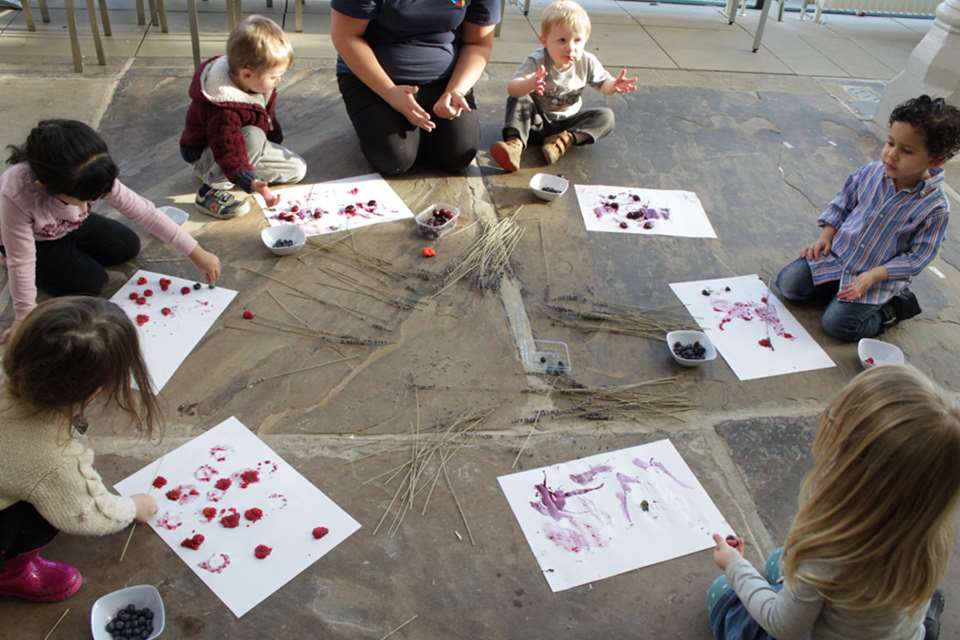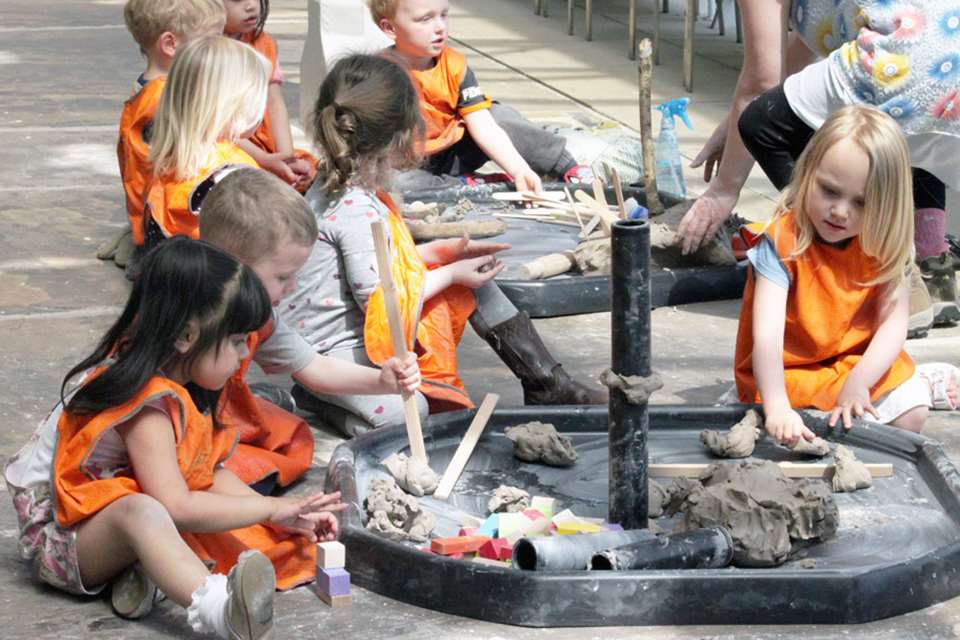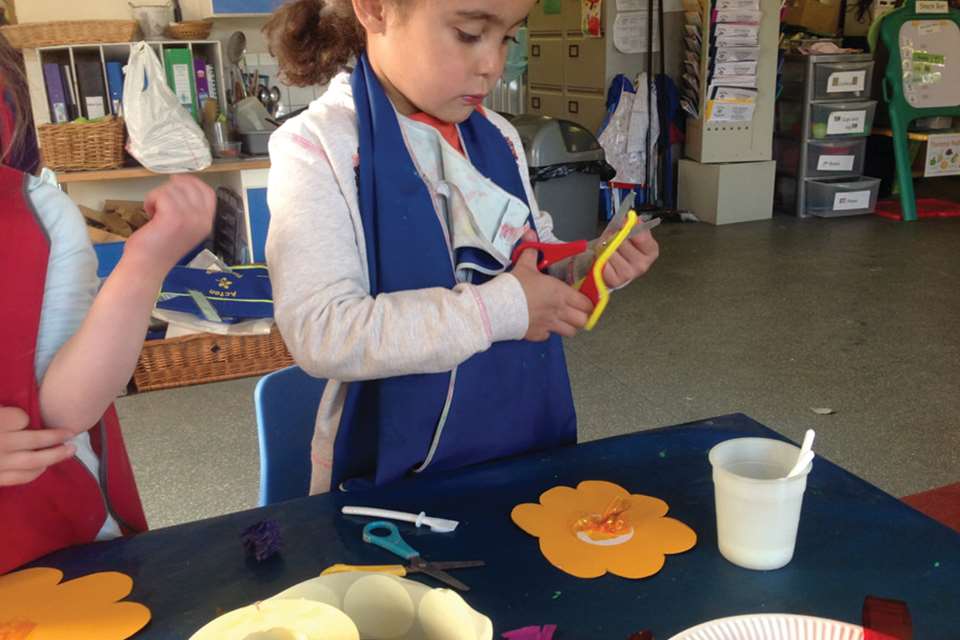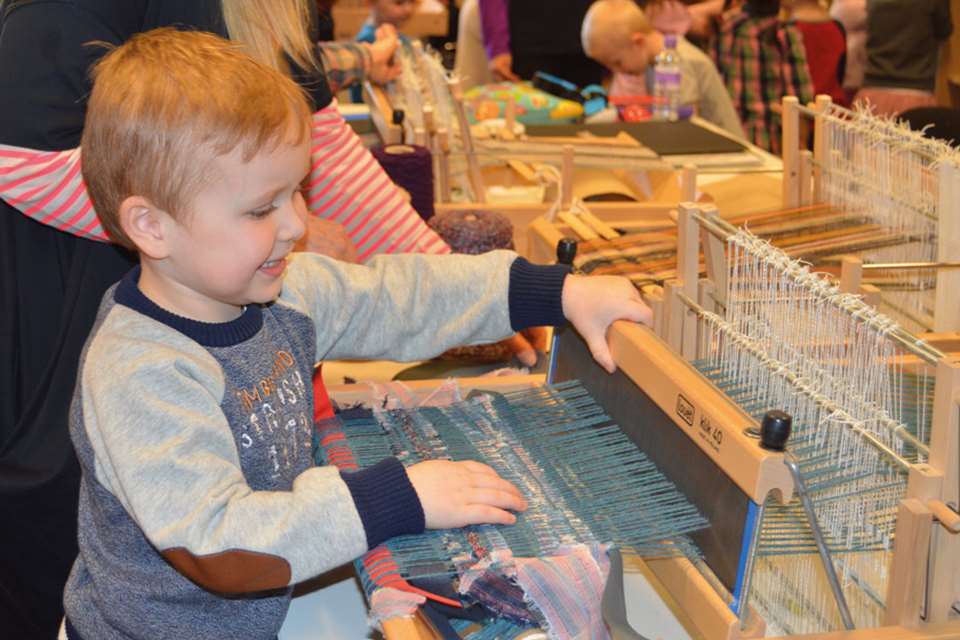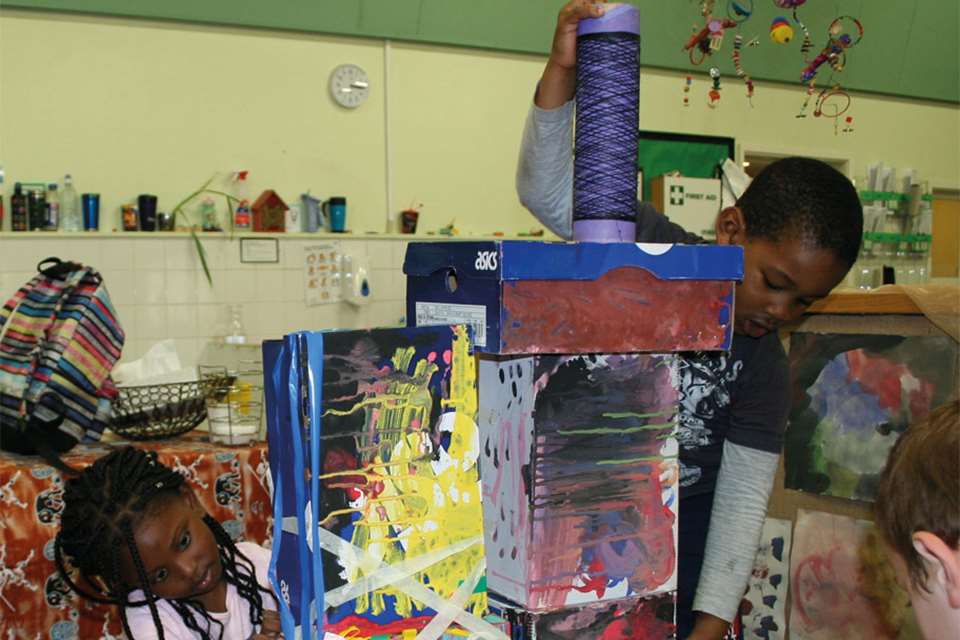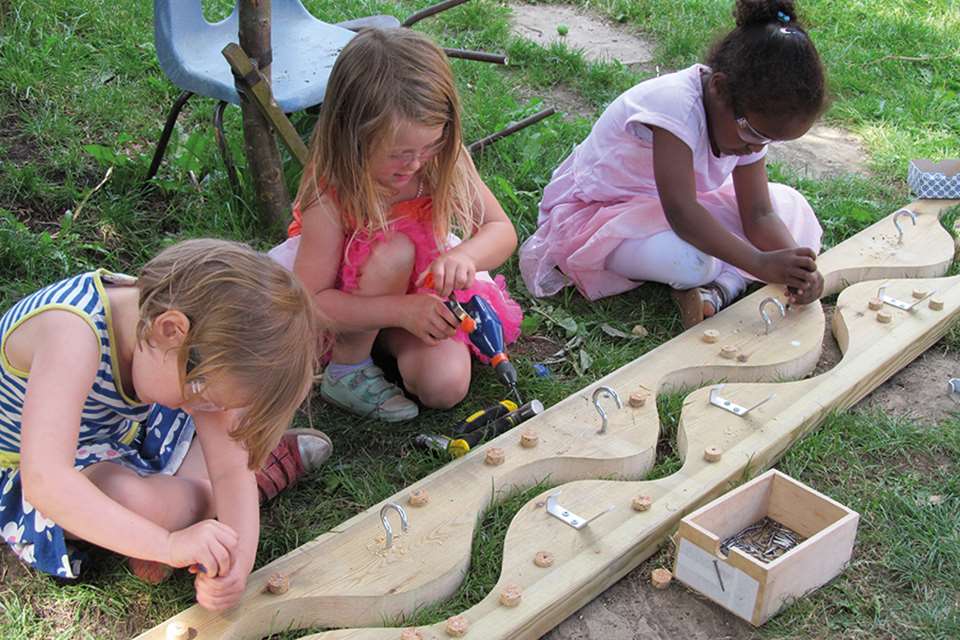Enabling Environments: Collections - To the beat
Nicole Weinstein
Monday, October 17, 2016
Dance is an important part of the ‘Expressive arts and design’ area of the curriculum, so all settings should give it a go, reports Nicole Weinstein, who also pinpoints some useful resources

Young children love to move their bodies in response to the world around them. When hearing music, most children will instinctively jump, wiggle or skip – and this makes them feel good.
Anna Daly, an early years community dance artist and co-author of Understanding Physical Development in the Early Years, says dance and movement are ‘invaluable’ in a child’s early years. This is not only because they assist learning and attainment, but also because they are a non-spoken language that children are fluent in, and so promote holistic development of the individual. ‘Dance and movement give children a sense of ownership as they use their own physicality as a tool for exploration, expression and mastery,’ she explains. ‘The wider benefits include physical, cognitive and emotional development as well as the ability to learn, communicate, understand their self and their own body, take risks and become a well-integrated child.’
Not only can freestyle dance and movement activities be part of a setting’s continuous provision, but practitioners can also offer more structured sessions that encourage children to use their bodies in a creative fashion.
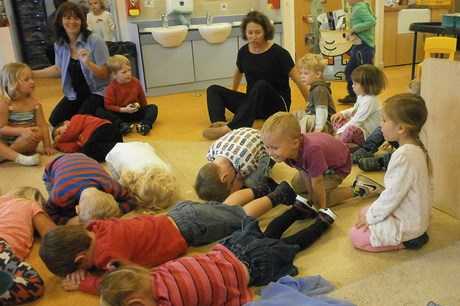
POSITIVE OBSERVATIONS
Dance is a key element of the ‘Expressive arts and design’ area of the curriculum because it promotes and encourages creativity. Improvisation of dance moves is particularly important in the early years as children explore patterns of movement to create their own dance sequences.
Some settings prefer to buy in specialist dance teachers to undertake movement sessions, often because their practitioners lack the confidence to co-lead the activities.
Ms Daly says while there is a place for bringing in experts with particular skills and a more comprehensive knowledge of dance and the vocabulary of dance, it is important for practitioners to understand that children, particularly in the early years, ‘know the possibilities of their bodies’ and they can ‘naturally’ be quite creative with them.
She explains, ‘Practitioners who are tuned into their children can support them in simple dance and movement sessions using music; the language of movement and carefully-chosen props. Positive observation is also key; saying things like, “I noticed your stretch”, so that the child is aware that their efforts have been noted, which further encourages experimentation with the body.’
GETTING STARTED
Here are some useful pointers to incorporating music and movement into your continuous provision:
A bag of dancing scarves
Practitioners can create a bag of different types of fabric at different lengths. This can be placed in the corner of the room or outdoors and be part of the continuous provision to be explored by children as and when they please. The scarves can be twirled and flapped and are a great stimulus for dancing and directing movement. Children can paint circles in the sky; swirl them around; spin them; do zig zags with them; jump up high and down low with them. Also, for children who feel too self-conscious to move on their own, using a prop gives them another focus that encourages easier movement.
Music
A good starting point is to find music that will inspire the children to move. Ms Daly suggests using world music, global sounds or a world compilation CD because the different sounds, instruments and rhythms often don’t have lyrics, and allow children to respond creatively.
She adds, ‘We also recommend using soundtracks – maybe not the obvious Disney soundtracks that everyone knows and loves, because practitioners might end up just doing a certain type of dance or singing along to those. Soundtracks from different, unusual or dramatic films often act as a stimulus to allow children to move in different ways, or they might suddenly become narrative in their dance as they tell a story or explore different emotions and moods.’
Recommended resources
- Soundtrack for Little Miss Sunshine
- Albums from the Penguin Cafe Orchestra, www.penguincafe.com/original/home.htm
- Christopher Bensted composes music for creative dance in the early years. He has tracks that are 30 seconds or three minutes long, which are good for short activities, available on iTunes or www.musicfordance.net/#
- Music CDs Under the Sun, £7.50, and Still Waters, £7.50, from www.jabadao.org
Movement words
Practitioners can use movement words as a stimulus to encourage children to move their bodies in response to the word. For example, a practitioner could say, ‘Show me a stretch or a spin or a turn or a jump or a balance.’ If you had three of those words, children would probably give you lots of different versions of those movements using different body parts and from different levels. So that allows them to respond quite freestyle, but they have a particular stimulus.
Dancing hands and feet
Rather than just putting on some music and expecting the children to immediately start moving in a freestyle fashion, practitioners can use different styles of music to offer some simple structure to the session. Ms Daly suggests using three pieces of music: one ‘plinky-plonky; one that encourages more freestyle, larger creative movements; and one calm track.’
She then offers the following advice for practitioners:
- Start the session in circle time
- Explore some very small dances with hands and feet – wriggling of fingers; tapping of feet; stretching of fingers; pointing of toes; shaking of feet
- This on-the-spot mobilisation acts as a warm-up and the articulate movements are good for fine motor skills development
- After, move on to big movements in a larger space, where the music can guide children to experiment with their bodies
- And then bring it back to the smaller space again with the calmer, cool-down music
Props 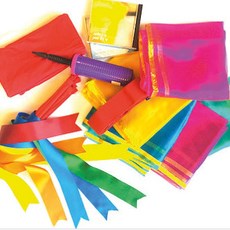
Lycra, scarves, odds and ends of fabric, ribbons, percussion, bells – anything that encourages movement. Try Glittering Scarves, £26.67, or the Starter Kit, £150, which includes seven different props and two CDs, from www.jabadao.org.
Books
- Giraffes Can’t Dance by Giles Andreae and Guy Parker-Rees
- The Book Of Dance published by Dorling Kindersley
- Dancing Larry by Daniel Pinkwater (Benchmark Books)
- Understanding Physical Development in the Early Years by Anne O’Connor and Anna Daly (Routledge, 2016)
- Earlyarts UK teaching packs: Body Doodles, Stretchy Bodies, Using Body Wordshapes and a series including baby dance titles, http://earlyarts.co.uk/products
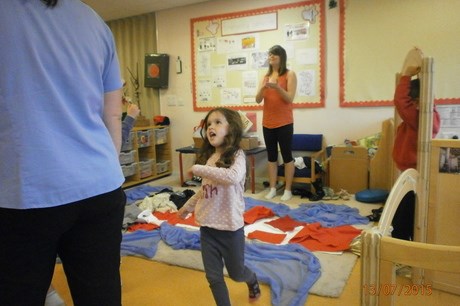
CASE STUDY: PATHWAYS DAY NURSERY, HELSTON, CORNWALL
Children at Pathways Day Nursery, based on the school site of Parc Eglos Primary School, enjoy regular dance workshops from visiting dance teacher Jo Simms, principal of Ocean Academy of Dance. During one session, the three- and four-year-olds produced an original piece of theatre comprising movements, signing and storytelling, based on the well-known story The Lighthouse Keeper’s Lunch.
Mrs Simms explains, ‘The children had been reading this book in their nursery sessions – and it was a favourite at the time so I listened to their ideas and suggestions and we decided to focus the workshop around this story.
‘As the children knew the story well, they were able to think about the pictures. We took aspects from the story to create a movement sequence. The children sat in positions making the shape of a big rowing boat and we all used big arm movements pretending we were rowing the boat. The children offered some ideas that the boat might be rocking side to side on the waves. We also made our bodies very tall like the shape of the lighthouse and the children gave their own ideas when acting out cleaning and polishing the lighthouse.
‘We asked for a volunteer to play the character of Mrs Grimling and she was very eager to demonstrate how she made Mr Grimling’s picnic. We used props for the picnic including a basket and wire to send it across to the lighthouse.
‘The rest of the children were asked to play the seagulls. But how would they move? The responses were, “flying, swooping, turning, squawking”, and with arms stretched out wide, the children explored different ways of moving around the picnic basket as it went along the wire.
‘We were delighted with the amazing piece of original theatre that was produced with the children in the workshop. The children were all so engaged and energetic.’
More information
- www.oceanacademyofdance.co.uk
- Anna Daly and Anne O’Connor are directors of early years training company Primed for Life, www.primedforlife.co.uk, offering support for dance and physical development in the early years and all aspects of the Prime areas in the EYFS. Ms O’Connor is an independent early years consultant, trainer and writer. Ms Daly is a creative movement play specialist and dance development artist. For more information, please contact info@primedforlife.co.uk


